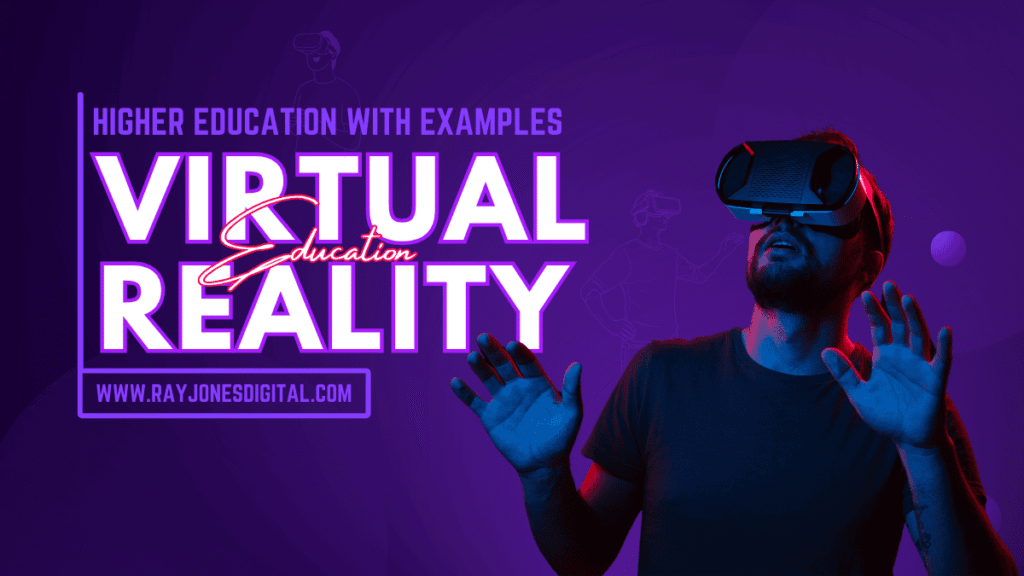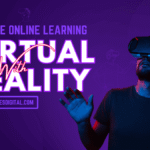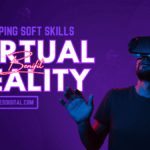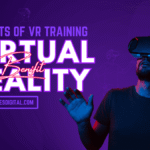
Higher education institutions worldwide are embracing virtual reality as a transformative teaching tool that extends far beyond traditional classroom boundaries. Universities and colleges are discovering that VR in Higher Education technology creates unprecedented opportunities for experiential learning, skill development, and student engagement across diverse academic disciplines.
From medical schools using VR for surgical training to business programmes developing leadership skills through virtual simulations, this technology is reshaping how students learn, practice, and prepare for their future careers. This comprehensive exploration examines real-world applications, benefits, and success stories that demonstrate VR’s growing impact on higher education.
Why VR Matters in Higher Education
Virtual reality addresses fundamental challenges that higher education has struggled with for decades. Traditional teaching methods often rely heavily on theoretical knowledge without providing adequate opportunities for practical application. Students may understand concepts intellectually but lack the hands-on experience necessary to apply them effectively in real-world situations.
VR technology bridges this gap by creating immersive learning environments where students can practice skills, explore concepts, and gain experience without real-world constraints or consequences. This experiential learning approach aligns with educational research showing that students retain information better when they actively participate in their learning process.
The technology also addresses accessibility challenges in higher education. Students who cannot travel to specific locations, access expensive equipment, or participate in certain activities due to physical limitations can now engage with these experiences through virtual environments. This democratisation of educational opportunities represents a significant advancement in inclusive education.
Medical Education: Revolutionising Healthcare Training
Medical schools have emerged as pioneers in VR adoption, using the technology to supplement traditional anatomy lessons and clinical training. Students can now explore detailed 3D anatomical models, perform virtual surgeries, and practice diagnostic procedures in risk-free environments.
Surgical Training and Skill Development
VR surgical simulators allow medical students to practice complex procedures repeatedly without risk to patients. These systems provide haptic feedback that simulates the feel of actual surgical instruments and tissues, creating realistic training experiences that build muscle memory and confidence.
Students can practice rare or complex procedures that they might encounter infrequently during traditional clinical rotations. This exposure ensures graduates are better prepared for diverse medical challenges they may face in their careers.
The technology enables standardised training experiences across all students, regardless of the clinical cases available at their particular institution. This consistency helps ensure more uniform competency levels among graduating medical professionals.
Empathy and Patient Communication Training
Medical VR programmes increasingly include scenarios designed to develop soft skills essential for healthcare delivery. Students practice delivering difficult news, handling upset patients, and navigating complex family dynamics in virtual environments.
These simulations help future healthcare providers develop empathy by experiencing medical situations from patient perspectives. Students can understand what it feels like to receive a diagnosis or undergo treatment, improving their ability to provide compassionate care.
Virtual patients with diverse cultural backgrounds and medical conditions expose students to situations they might not encounter during limited clinical rotations. This exposure builds cultural competence and reduces unconscious bias in patient care.
Business and Management Education: Building Future Leaders
Business schools are leveraging VR technology to create immersive learning experiences that prepare students for leadership roles and complex business challenges. Virtual environments simulate real-world business scenarios where students must make decisions, manage teams, and navigate organisational challenges.
Leadership Development Through Virtual Reality
VR leadership training places students in realistic management scenarios where they must guide virtual teams through challenges, resolve conflicts, and make strategic decisions. These experiences develop the interpersonal skills and judgment necessary for effective leadership.
Students practice delivering presentations to virtual boards, managing difficult employees, and leading change initiatives in safe environments where mistakes become learning opportunities rather than career setbacks. This practice builds confidence and competence before entering the workforce.
Virtual team members respond dynamically to different leadership styles, showing students how their approaches affect team morale, productivity, and outcomes. This immediate feedback helps students understand the consequences of their leadership decisions.
Entrepreneurship and Innovation Training
Business schools use VR to simulate startup environments where students can experiment with business ideas, pitch to virtual investors, and navigate the challenges of launching new ventures. These experiences provide valuable insights into entrepreneurial thinking and risk management.
Students can practice negotiating deals, managing investor relationships, and handling business crises in virtual environments. These high-stakes scenarios develop the resilience and adaptability essential for entrepreneurial success.
The technology enables students to explore different business models and market conditions without real financial risks. This experimentation encourages innovative thinking and helps students understand business dynamics more deeply.
Engineering and Technical Education: Hands-On Learning Without Limits
Engineering programmes use VR to provide students with hands-on experience using expensive equipment and exploring complex systems that would be impossible to replicate in traditional laboratories. Students can disassemble virtual engines, design complex structures, and test engineering solutions in realistic environments.
Advanced Laboratory Simulations
VR laboratories enable students to conduct experiments and use equipment that would be prohibitively expensive or dangerous in physical settings. Students can work with hazardous materials, operate complex machinery, and explore extreme environments safely.
Virtual experiments can be repeated multiple times with different variables, allowing students to understand cause-and-effect relationships more thoroughly. This repeated practice reinforces learning and builds deeper understanding of engineering principles.
The technology provides access to state-of-the-art equipment and facilities that many institutions cannot afford. Students gain experience with industry-standard tools and processes that prepare them for professional engineering careers.
Design and Visualisation Applications
Engineering students use VR to visualise and manipulate 3D designs, enabling them to understand spatial relationships and design implications more effectively. This visualisation capability enhances traditional CAD training and improves design thinking skills.
Students can walk through virtual buildings, inspect mechanical systems, and identify potential design problems before construction begins. This experience develops critical thinking skills and helps students understand the practical implications of their designs.
Collaborative design projects enable students to work together in virtual spaces, sharing ideas and building solutions collectively. This teamwork prepares students for modern engineering environments where collaboration is essential.
Psychology and Social Sciences: Understanding Human Behaviour
Psychology programmes leverage VR to create controlled environments for studying human behaviour and practicing therapeutic techniques. Students can observe virtual social interactions, practice counselling skills, and explore psychological phenomena in immersive settings.
Therapeutic Skills Development
Psychology students practice counselling techniques with virtual clients who present various mental health challenges. These simulations provide safe environments for developing therapeutic skills without risking harm to real clients.
Virtual clients can be programmed to respond consistently to different therapeutic approaches, enabling students to understand how various techniques affect client outcomes. This consistency helps students build confidence in their therapeutic abilities.
The technology enables practice with diverse client populations, helping students develop cultural competence and understand how different backgrounds affect therapeutic relationships. This exposure prepares students for diverse clinical settings.
Social Psychology Research Applications
VR enables psychology students to conduct research studies in controlled virtual environments where variables can be precisely manipulated. Students can study social behaviour, group dynamics, and decision-making processes with greater control than traditional research methods allow.
Virtual environments eliminate many ethical concerns associated with psychology research, enabling students to explore sensitive topics and situations that would be difficult to study in real-world settings.
The technology provides opportunities to study rare or extreme situations that students might never encounter in traditional research settings. This exposure broadens students’ understanding of human behaviour and psychological principles.
Language and Cultural Studies: Immersive Learning Experiences
Language programmes use VR to create immersive cultural experiences that enhance traditional language learning. Students can visit virtual representations of foreign countries, interact with native speakers, and practice language skills in realistic contexts.
Cultural Immersion Without Travel
VR enables students to experience different cultures firsthand without the expense and logistics of international travel. Students can explore historical sites, attend cultural events, and interact with virtual cultural ambassadors.
These immersive experiences provide cultural context that enhances language learning and helps students understand the relationship between language and culture. Students develop cultural competence alongside linguistic skills.
Virtual cultural exchanges enable students to practice language skills with native speakers from around the world, expanding their exposure to different accents, dialects, and cultural perspectives.
Historical and Archaeological Applications
History students can explore ancient civilisations, walk through historical events, and examine archaeological sites in their original contexts. These experiences bring history to life and help students understand historical events more deeply.
Virtual archaeological excavations enable students to participate in research projects and learn proper excavation techniques without damaging actual sites. This hands-on experience prepares students for field work and research careers.
The technology enables time-travel experiences where students can observe historical events unfold and understand cause-and-effect relationships in historical contexts. This temporal perspective enhances historical understanding and critical thinking skills.
Measuring VR’s Impact on Student Learning
Academic Performance Improvements
Research studies consistently show that students using VR technology demonstrate improved academic performance compared to traditional teaching methods. VR learners typically achieve higher test scores, better retention rates, and deeper understanding of complex concepts.
Students report higher engagement levels and motivation when using VR for learning. This increased engagement translates to better attendance, participation, and overall academic success.
VR training enables more personalised learning experiences where students can progress at their own pace and focus on areas needing improvement. This personalisation leads to better learning outcomes and higher satisfaction levels.
Skill Development and Retention
VR training produces measurable improvements in both technical and soft skills development. Students demonstrate better problem-solving abilities, enhanced communication skills, and increased confidence in applying their knowledge.
Skills learned through VR training show better retention rates compared to traditional training methods. Students can recall and apply VR-learned skills more effectively in real-world situations.
The technology enables more comprehensive skill assessment through detailed performance analytics. Educators can identify specific areas where students need improvement and provide targeted support.
Student Satisfaction and Engagement
Student feedback consistently shows high satisfaction levels with VR learning experiences. Students report that VR makes learning more enjoyable, memorable, and relevant to their career goals.
VR technology appeals to diverse learning styles, accommodating visual, auditory, and kinesthetic learners more effectively than traditional teaching methods. This inclusivity leads to better outcomes for all students.
The novelty and excitement of VR technology initially motivate students, but sustained engagement depends on well-designed educational content and clear learning objectives.
Overcoming Implementation Challenges
Technical Infrastructure Requirements
Implementing VR in higher education requires significant investment in hardware, software, and technical support. Institutions must carefully plan their technology infrastructure to support VR programmes effectively.
Staff training represents a crucial component of successful VR implementation. Educators need technical skills and pedagogical knowledge to integrate VR effectively into their teaching practices.
Regular equipment maintenance and software updates require ongoing technical support and budget allocation. Institutions must plan for these continuing costs when implementing VR programmes.
Content Development and Customisation
Creating high-quality VR educational content requires specialised skills and significant time investment. Institutions must either develop internal capacity or partner with external developers to create effective VR learning experiences.
Customising VR content to specific curriculum requirements and learning objectives can be challenging and expensive. Institutions must balance customisation needs with available resources and expertise.
Regular content updates ensure VR programmes remain current and relevant. This ongoing development requires sustained commitment and resource allocation from educational institutions.

I am Ray Jones Digital
My current occupations: a Digital Marketer, Local SEO expert, Link Builder, and WordPress SEO specialist. Shopify SEO, Ecommerce Store Management, and HTML & WordPress Developer I have been practicing the above mentioned services for more than 10 years now As an SEO expert working with your ongoing projects.



